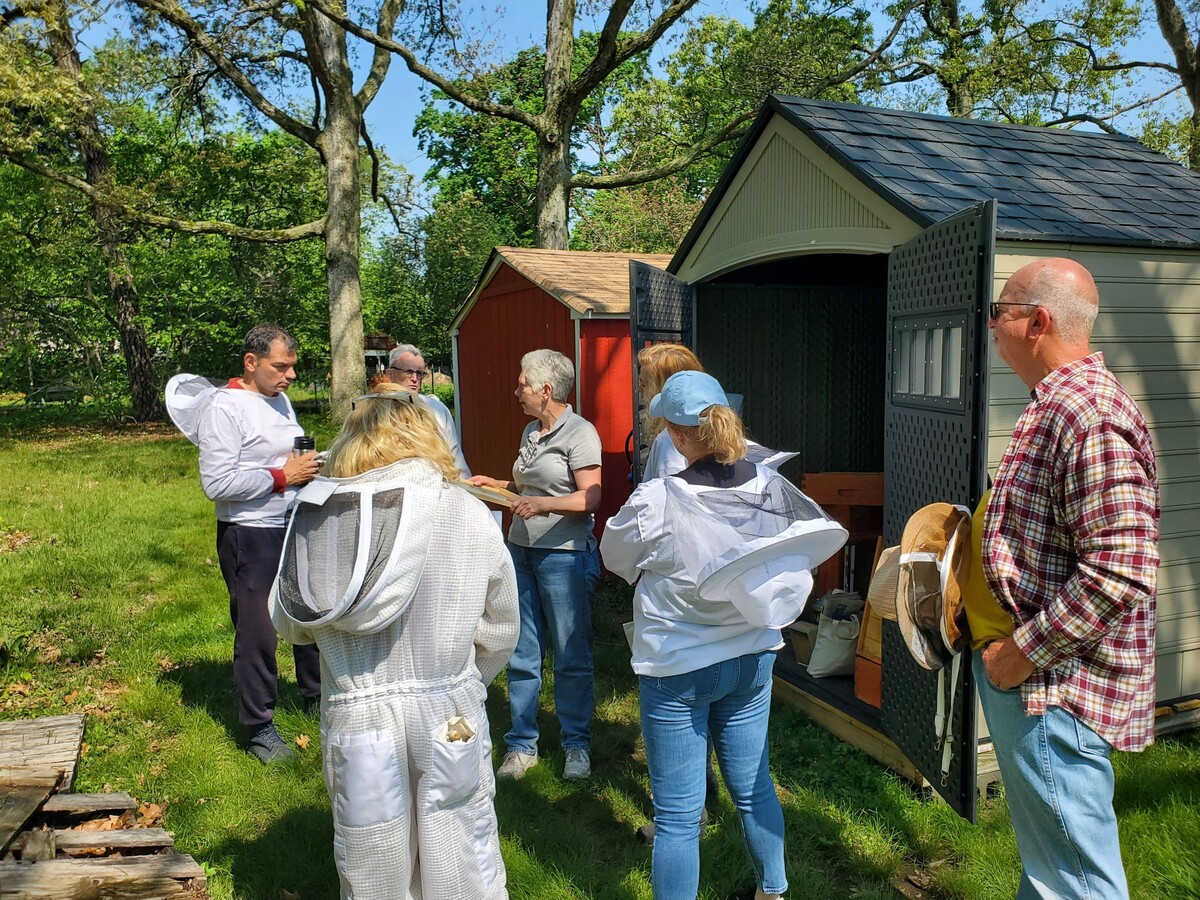Image

On Saturday May 21st, several members from the Long Island Beekeeper’s Club met on the grounds of the Sisters of St. Joseph Congregation in Brentwood for some hands-on beekeeping instruction and demonstration. The bees are housed on the St. Joseph campus.
Master beekeeper Grace Mehl, a Navy veteran, became a master beekeeper through the Eastern Agricultural Society. It’s an extensive process requiring five years of beekeeping experience, a written exam, a practical exam, and lastly successful completion of a formal presentation. Grace has been with the group for eleven years and currently serves as the Group's Education Director.
There are also several colleges that provide beekeeper coursework and training, including New York’s Cornell University.
Also in attendance today was John Most, current president of the LI Beekeepers Club. The Beekeepers club functions to support and assist beekeepers and was formed in 1949 according to its website.
John and Grace each took half the group for close up instruction working with the bees. The work shop started with the lighting of two “smokers.” These are used to help keep the bees calm while the handling and observation are taking place. “While bees are not capable of hearing, they can sense vibration and emotion,” explained Grace to the group.
During today’s educational session, which included several new members, Grace went over proper guidelines for handling bees, including using the correct attire to protect from stings and handling of the trays and boxes which house the bees. Some members were surprised to learn bees can crawl up your lower leg so it’s important to wear long pants and boots. Grace also discussed the role of bees in nature, the importance of pollination, species of bees (honey and bumble) and the hive “order” including the queen, worker bees and drones (male bees). The drones do not have stingers, and Grace took one out of the hive tray for an observer to handle.
One bee club member present today was Roger Kamm. Roger explained he got interested in beekeeping about three years ago after he retired. He “finds bees fascinating and loves his new hobby.” He currently has two hives in his back yard and has already produced and bottled several jars of honey. The club currently has about 350 members on Long Island at various levels of experience as beekeepers.
In today’s session, the members also learned there are 30,000 bees contained in a hive. Each Queen can lay 10,000 eggs. In the actual bee tray, Grace pointed out how to identify brood (eggs), nectar (from pollination) and honey. While she searched for a queen, she was unable to locate one.
The group also discussed swarming, which occurs when the colony gets too large, resulting in overcrowding. When this happens, the hive splits into at least two groups. One group stays in the existing hive, while the other group exits and finds a new home. This is considered a positive change, and it increases the bee population.
The LI Beekeepers Club has a website, https://longislandbeekeepers.org/. The site contains educational information, a notice of how to join the group, current events and even how to report a bee swarm. Hopefully then the bees can be returned to their owner.